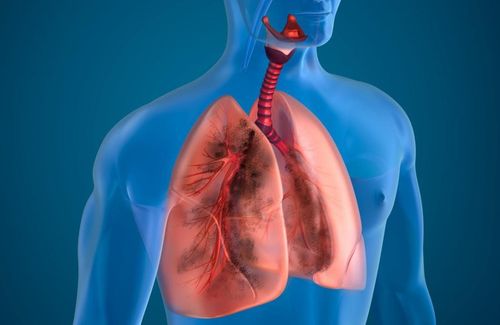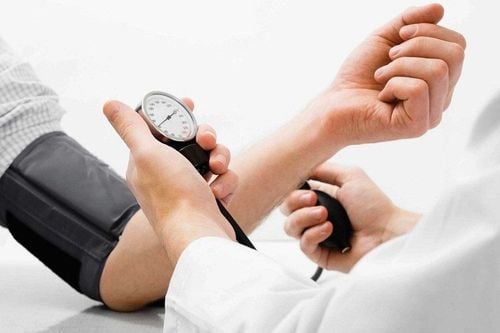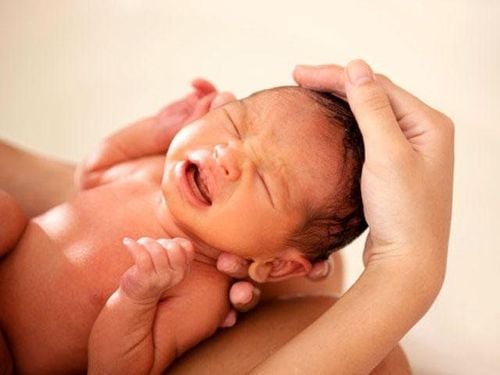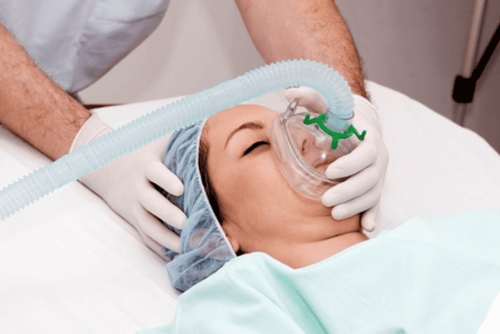This is an automatically translated article.
The article is professionally consulted by Master, Doctor Tong Van Hoan - Emergency Medicine Doctor - Emergency Department - Vinmec Danang International Hospital.Fast or slow breathing both warn of certain diseases that you need to pay attention to. If you feel irregular breathing or feel short of breath for no reason, you should go to the nearest medical center or hospital to have it checked.
1. What is the respiratory rate?
Respiratory rate (breath rate) is a measure of the number of breaths per minute of a healthy person. The respiratory rate is regulated and controlled by the respiratory center. Principles for monitoring breathing rate:Before measuring respiratory rate, the measured subject should be rested for 15 minutes. Subjects did not use respiratory stimulants or inject drugs affecting breathing before measuring the breathing rate. Follow the doctor's orders and technical procedures. Clearly and accurately record test results.
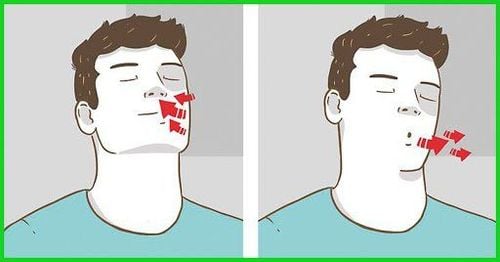
2. What is the normal breathing rate?
Doctors often rely on manifestations such as smooth, regular breathing, slow and deep air through the nose, no rapid breathing or excessive slow breathing to assess a person's breathing rate as normal. The normal breathing rate of an adult is 16-20 breaths per minute, the breathing rate is regular, the breathing amplitude is medium, the inspiratory period is strong, and the exhalation time is short.Breathing rate will be divided by month/age as follows:
Newborns: 40 - 60 times/minute Children under 6 months old: 35-40 times/minute Children from 7-12 months old: 30-35 times / min Children 2-3 years old: 25-30 times/minute Children 4-6 years old: 20-25 times/minute Children 7-15 years old: 18-20 times/minute. In the elderly: from 65 and over, the average respiratory rate is 12-28 times/minute, over 80 years old, the respiratory rate is 10-30 times/minute.
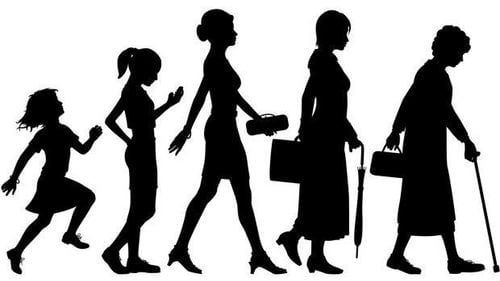
3. Changes in breathing rate
3.1 Respiratory center The respiratory center is located in the pons and medulla oblongata, consisting of many gray nuclei that control most activities of respiration including respiratory rate.The respiratory center regulates the breathing rate through the efferent nerves to the respiratory muscles - the muscle group that performs exhalation and inhalation (diaphragm, intercostal muscles...).
Under normal conditions, this center beats to maintain a steady, rhythmic breathing. Some disorders of the pons and medulla oblongata affect the respiratory center leading to disturbances in respiratory rate. For example, a pontine infarction causes breathing disturbances.
This center also has an upward connection with the thalamus and cerebral cortex, so changes in emotions and behaviors also have a certain influence on the breathing rate.
3.2 CO2 concentration and blood pH Blood CO2 concentration has an important influence on respiratory rate. Normally, CO2 is maintained at a stable concentration in the blood by the regulation of many mechanisms including regulation by breathing rate.
Blood CO2 concentration increases due to many causes such as gas stasis of COPD, bronchial asthma, ..., then it will be sensed in the carotid sinus and aortic arch and send signals to the respiratory center to cause Increase breathing rate to eliminate CO2 in the blood to bring the CO2 concentration to a stable level.
Blood pH and CO2 have a direct relationship with each other. When CO2 increases, the blood pH increases, which causes many disorders for the body and also stimulates an increase in breathing rate. Conversely, when blood pH decreases, the body adjusts by reducing breathing rate to keep CO2 thereby increasing blood pH to normal.
3.3 Blood O2 concentration O2 has less impact on respiratory rate than CO2. However, there is still a certain effect: when the O2 concentration is low, it will initially cause deep breathing and then increase the breathing rate. O2 concentration also affects the carotid sinus and the aortic arch causing increased susceptibility to CO2
3.4 Other factors X cord: plays an intermediary role in maintaining the inspiratory and expiratory phases of activity. respiration
Swallowing center: When the swallowing center is stimulated, it will inhibit respiratory activity, so when we swallow, we will temporarily stop breathing.
Hypothalamus: The hypothalamus is affected by the outside temperature, thereby affecting respiratory activity to help regulate body temperature. When body temperature increases, heat loss through respiration increases, thereby increasing breathing rate and vice versa.
Emotions: as mentioned above, nervous, happy emotions increase breathing rate, gloomy and sad emotions decrease breathing rate.

4. Irregular breathing
Abnormal respiratory rate changes in breathing rate and duration. Regular slow respiratory rate: when respiratory rate is below normal limit Regular tachypnea: when respiratory rate is above normal limit Cheyne–Stokes breathing rate: shortness of breath and pauses in breathing alternately, each cycle The period is about one minute, divided into two phases: + Stage 1: stops breathing for about 15-20 seconds due to inhibition of the respiratory center.+ Tense 2: start breathing shallow, light, gradually become deep, fast and strong. Then changed to shallow, light, then stopped to start another cycle, due to cessation of breathing, the high concentration of carbon dioxide accumulated in the blood stimulated the respiratory center.
Cheyne - Stokes breathing is common in brain hemorrhage, brain tumor, intoxication, uremia... Kussmaul breathing rate: deep inhale - short pause - exhale quickly, then stop breathing longer and then again another cycle. Kussmaul breathing is common in diabetic coma.
5. Illnesses affecting abnormal breathing
Diseases affecting abnormal breathing rhythm:Neuropathy: Cerebrovascular accident: hemorrhage or infarction in the brain stem will affect the respiratory regulation center, causing breathing disturbances.
Endocrine diseases: Diabetes: in some cases, blood pH disturbances cause Kussmaul Basedow breathing pattern: increased breathing rate due to increased thyroid hormone secretion.
Poisoning: some toxins affect the nervous system causing abnormal breathing. or substances that disturb the balance of blood pH that affect normal breathing.
Respiratory diseases: COPD, bronchial asthma, pneumonia, bronchiolitis,...
Cardiovascular diseases: heart failure, mitral stenosis,
Shock conditions: blood loss, trauma, anaphylaxis causes rapid shallow breathing.
Use of drugs: some drugs inhibit the respiratory center such as morphine, codeine, ... others stimulate disturbances such as adrenaline, xanthine,...
6. Caring for patients with abnormal breathing
Depending on the cause of the disease, we have ways to care for patients with abnormal breathing. It is mainly concerned with caring for patients with signs of shortness of breath, and then finding and treating the cause.Steps to take care of patients with difficulty breathing:
Encourage and comfort the patient's spirit. Position the patient in an appropriate position to keep the airway straight and clear. There are 2 positions: + Half-lying, half-sitting position
+ Lower head upright position
Clear airway for the patient by suctioning out sputum, removing foreign objects in the airway,... Loosening clothes The neck scarf helps the patient to be comfortable, without restricting the activity of the respiratory muscles. Ensure adequate ventilation of the patient's surroundings by: opening the door to a well-ventilated room, limiting the number of people in the ward,... Give the patient O2 when indicated. Depending on the difficulty of breathing of each patient, there are different indications for O2 breathing: O2 mask breathing, O2 breathing with glasses or intubation. Any questions that need to be answered by a specialist doctor as well as if you want to be examined and treated at Vinmec International General Hospital, you can contact Vinmec Health System nationwide or register online. route
Please dial HOTLINE for more information or register for an appointment HERE. Download MyVinmec app to make appointments faster and to manage your bookings easily.





